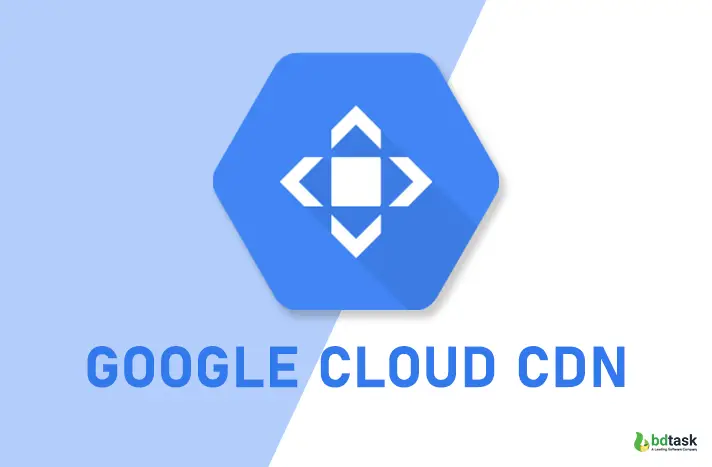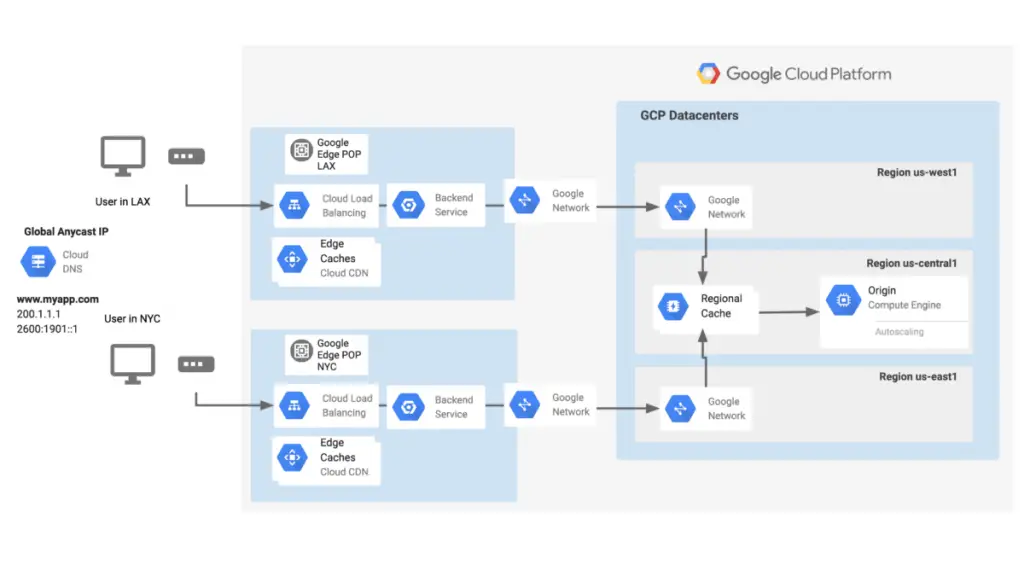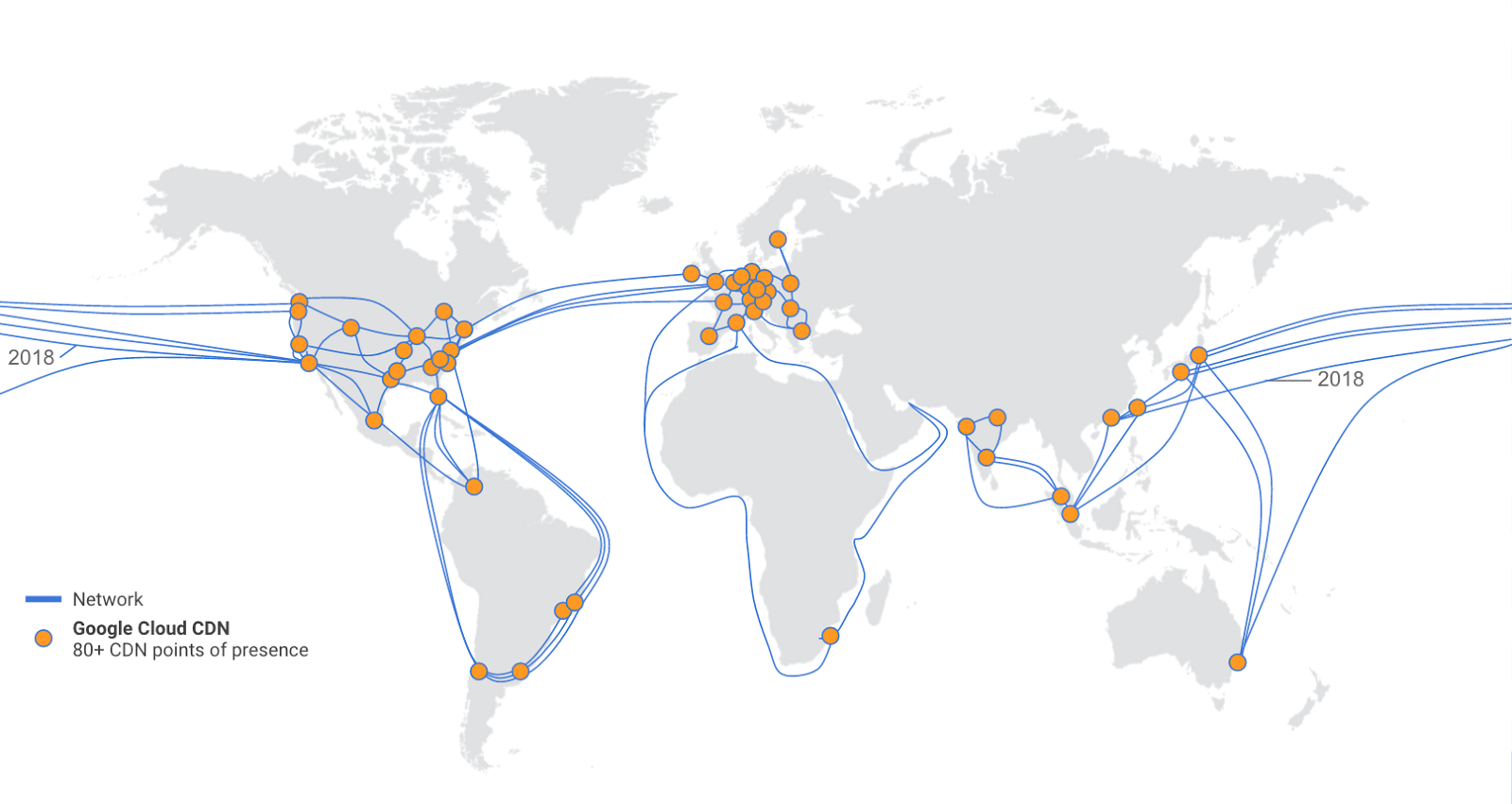Google Cloud CDN: Harnessing Google’s Global Infrastructure for Enhanced Web Performance

Introduction:

Google Cloud Content Delivery Network (CDN) is a powerful service that leverages Google’s vast global infrastructure to deliver content to users with lightning-fast speed and reliability. By caching content closer to end-users, Google Cloud CDN minimizes latency, reduces load on origin servers, and provides a seamless browsing experience.

Benefits of Google Cloud CDN:
- Enhanced Page Speed: Serve content from strategically placed edge locations to significantly improve page loading times.
- Reduced Latency: By caching content near users, Google Cloud CDN ensures a smoother and more responsive online experience.
- Scalability and Reliability: Google’s robust infrastructure scales effortlessly to handle traffic spikes and ensure uninterrupted service.
- Cost-Effective: Pay only for the resources you consume, making Google Cloud CDN an affordable solution for businesses of all sizes.
- Managed Service: Google manages the CDN infrastructure and updates, freeing up your team to focus on core competencies.
How Google Cloud CDN Works:
Google Cloud CDN caches static content, such as images, videos, and JavaScript files, at edge locations distributed globally. When a user requests content, the CDN checks if it is available at the nearest edge location. If it is present, the content is served directly from the edge cache. If it is not cached, the request is forwarded to the origin server, and the content is cached at the edge location for future requests.
Features of Google Cloud CDN:
- Edge Caching: Caches content at over 200 edge locations worldwide for lightning-fast delivery.
- HTTPS/TLS Support: Ensures the security of content delivery over HTTPS/TLS protocols.
- Image Optimization: Automatically optimizes images for faster loading and reduced bandwidth consumption.
- Cache Management: Provides fine-grained control over caching policies to optimize performance.
- Load Balancing: Distributes traffic across origin servers to ensure high availability and performance.
- Integration with Cloud Storage: Seamlessly integrates with Google Cloud Storage for efficient content management.
Use Cases:
Google Cloud CDN is ideal for a wide range of web applications, including:
- E-commerce Websites: Enhance product pages with high-quality images and videos without compromising page speed.
- Streaming Services: Deliver smooth and uninterrupted streaming to users globally.
- Content-Heavy Websites: Accelerate the loading of complex websites with abundant images, videos, and other multimedia content.
- News and Publishing Platforms: Publish content quickly and efficiently to reach a global audience with minimal latency.
- Mobile Applications: Optimize mobile apps for a seamless user experience, even on limited bandwidth.
Conclusion:
Google Cloud CDN is an indispensable tool for businesses looking to improve the performance, reliability, and scalability of their web applications. By leveraging Google’s global infrastructure and advanced caching technologies, Google Cloud CDN provides a lightning-fast and cost-effective solution to deliver content to users worldwide. Whether you are an e-commerce retailer, a content provider, or a mobile app developer, Google Cloud CDN can help you deliver a superior online experience that drives engagement and conversion.## Google Cloud CDN: Leveraging Google’s Global Infrastructure For Faster Web
Executive Summary
Google Cloud CDN is a content delivery network (CDN) that delivers content from Google’s globally distributed edge caches. By caching content closer to users, Google Cloud CDN can reduce latency and improve the performance of your website or application.
Introduction
Google Cloud CDN is a powerful tool that can help you improve the performance of your website or application. It is easy to use and can be integrated with your existing infrastructure. If you are looking for a way to improve the performance of your website or application, Google Cloud CDN is a great option.
FAQs
- What is Google Cloud CDN?
Google Cloud CDN is a content delivery network (CDN) that delivers content from Google’s globally distributed edge caches. By caching content closer to users, Google Cloud CDN can reduce latency and improve the performance of your website or application.
- How does Google Cloud CDN work?
When a user visits your website or application, their request is routed to the nearest Google Cloud CDN edge cache. If the content is cached, it is delivered to the user from the edge cache. If the content is not cached, it is fetched from your origin server and cached on the edge cache. This process reduces latency and improves the performance of your website or application.
- What are the benefits of using Google Cloud CDN?
There are many benefits to using Google Cloud CDN, including:
- Reduced latency: Google Cloud CDN can reduce latency by caching content closer to users.
- Improved performance: Google Cloud CDN can improve the performance of your website or application by reducing latency and improving load times.
- Increased scalability: Google Cloud CDN can help you scale your website or application by caching content on a global network of edge caches.
- Reduced costs: Google Cloud CDN can help you reduce costs by reducing bandwidth usage and improving the efficiency of your infrastructure.
Subtopics
Edge Caches
Edge caches are servers that are located closer to users. They store cached content so that it can be delivered to users more quickly. Google Cloud CDN has a global network of edge caches that are located in over 200 cities around the world.
- Reduced latency: Edge caches reduce latency by making content available closer to users.
- Improved performance: Edge caches improve performance by reducing the amount of time it takes for content to reach users.
- Increased scalability: Edge caches help to scale websites and applications by distributing content across a global network of servers.
- Reduced costs: Edge caches can help to reduce costs by reducing bandwidth usage and improving the efficiency of infrastructure.
Caching
Caching is the process of storing content on edge caches so that it can be delivered to users more quickly. Google Cloud CDN uses a variety of caching techniques to ensure that content is delivered to users as quickly as possible.
- HTTP caching: HTTP caching is a standard web caching technique that is used to store content on edge caches.
- Browser caching: Browser caching is a technique that is used to store content in a user’s browser cache.
- DNS caching: DNS caching is a technique that is used to store DNS records on edge caches.
- Prefetching: Prefetching is a technique that is used to fetch content from an origin server and store it on edge caches before it is requested by a user.
Load Balancing
Load balancing is the process of distributing traffic across multiple servers. Google Cloud CDN uses load balancing to ensure that content is delivered to users from the nearest and most available edge cache.
- Round-robin load balancing: Round-robin load balancing is a load balancing technique that distributes traffic to servers in a round-robin fashion.
- Weighted round-robin load balancing: Weighted round-robin load balancing is a load balancing technique that distributes traffic to servers based on their weight.
- Least-connection load balancing: Least-connection load balancing is a load balancing technique that distributes traffic to the server with the fewest active connections.
- IP-based load balancing: IP-based load balancing is a load balancing technique that distributes traffic to servers based on the IP address of the client.
Security
Google Cloud CDN provides a number of security features to protect your content from unauthorized access. These features include:
- SSL/TLS encryption: SSL/TLS encryption is used to encrypt content in transit between edge caches and users.
- Access control: Access control is used to restrict access to content to authorized users.
- DDoS protection: DDoS protection is used to protect against DDoS attacks.
- Web Application Firewall (WAF): WAF is used to protect against web application attacks.
Monitoring
Google Cloud CDN provides a number of monitoring features to help you track the performance of your CDN. These features include:
- Real-time monitoring: Real-time monitoring provides you with real-time data on the performance of your CDN.
- Historical monitoring: Historical monitoring provides you with historical data on the performance of your CDN.
- Customizable alerts: Customizable alerts allow you to set up alerts that will notify you of changes in the performance of your CDN.
- Reports: Reports provide you with detailed reports on the performance of your CDN.
Conclusion
Google Cloud CDN is a powerful tool that can help you improve the performance of your website or application. It is easy to use and can be integrated with your existing infrastructure. If you are looking for a way to improve the performance of your website or application, Google Cloud CDN is a great option.
Keyword Tags
- Google Cloud CDN
- Content Delivery Network (CDN)
- Edge Caches
- Caching
- Load Balancing
- Security
- Monitoring
